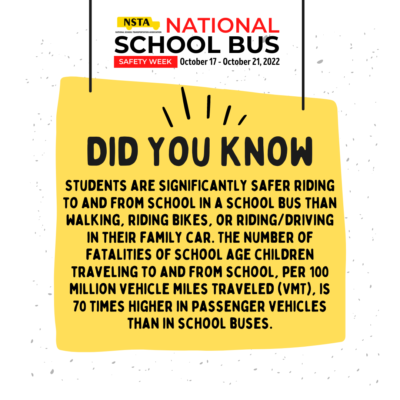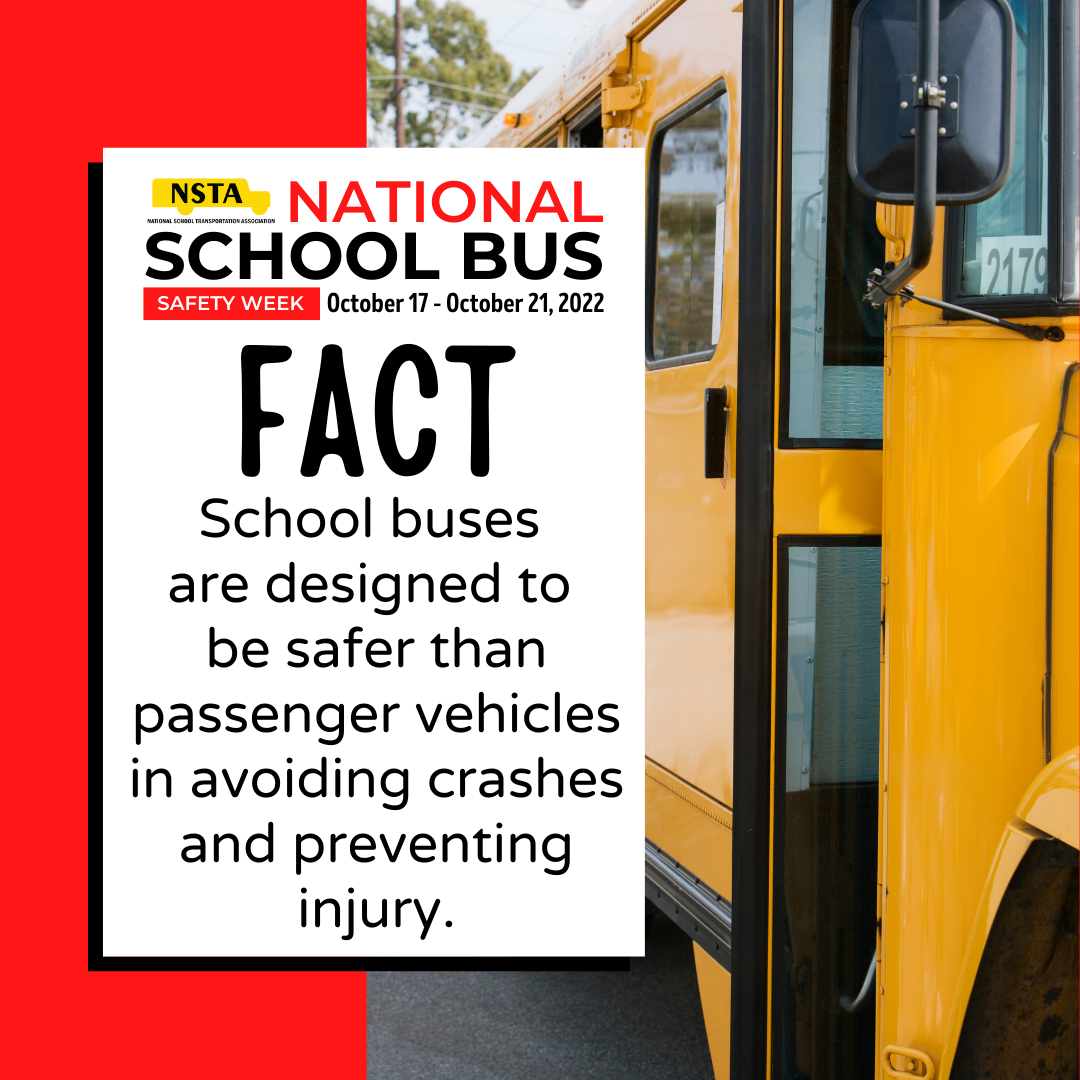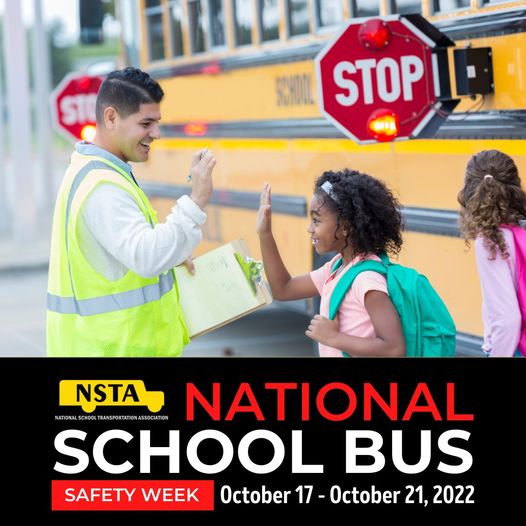National School Bus Safety WeekBoston, MA –National School Bus Safety Week is celebrated annually during the third full week of October. This year, we are celebrating from October 16 to October 22, 2023.
All week we will be sharing helpful school bus safety tips, but we also want to highlight the fantastic drivers across our country who are an integral part of our educational system.This event serves as a great way to bring together school bus operators, students, parents, educators, motorists, and anyone else interested in school bus safety to raise awareness on the importance of school bus safety.
Below are some school media images for you to use and/or you can “repost” STAM & NSTAs social media during the week! Together lets raise awareness for school bus safety!
Here’s a few suggestions to help promote National School Bus Safety Week in your city, town, or school district: radio broadcasts, cable television announcements and programs, presentations at school committee meetings, new bus displays at shopping malls, demos of student and/or driver training, “school bus tours,” open houses and press releases. We hope you will find a way to promote National School Bus Safety Week in your area.
SAFETY TIPS!
For Parents
Safety Starts at the Bus Stop
Your child should arrive at the bus stop at least five minutes before the bus is scheduled to arrive. Visit the bus stop and show your child where to wait for the bus: at least three giant steps (six feet) away from the curb. Remind your child that the bus stop is not a place to run or play.
Get On and Off Safely
When the school bus arrives, your child should wait until the bus comes to a complete stop, the door opens, and the driver says it’s okay before approaching the bus door. Your child should use the handrails to avoid falling.
Use Caution Around the Bus
Your child should never walk behind a school bus. If your child must cross the street in front of the bus, tell him/her to walk on a sidewalk or along the side of the street to a place at least five giant steps (10 feet) in front of the bus before crossing. Your child should also make eye contact with the bus driver before crossing to make sure the driver can see him/her. If your child drops something near the school bus, like a ball or book, the safest thing is for your child to tell the bus driver right away. Your child should not try to pick up the item, because the driver might not be able to see him/her.
For Drivers
Make school bus transportation safer for everyone by following these practices:
When backing out of a driveway or leaving a garage, watch out for children walking or bicycling to school.
- When driving in neighborhoods with school zones, watch out for young people who may be thinking about getting to school, but may not be thinking of getting there safely.
- Slow down. Watch for children walking in the street, especially if there are no sidewalks in neighborhood.
- Watch for children playing and congregating near bus stops.
- Be alert. Children arriving late for the bus may dart into the street without looking for traffic.
- Learn and obey the school bus laws in your state, as well as the “flashing signal light system” that school bus drivers use to alert motorists of pending actions:
- Yellow flashing lights indicate the bus is preparing to stop to load or unload children. Motorists should slow down and prepare to stop their vehicles.
- School Bus Driver In-Service Curriculum – Regular training is important for school bus drivers to stay up-to-date on the latest industry standards and to help them maintain and improve the safety of children in and around the school bus. NHTSA is now offering an improved School Bus Driver In-Service Curriculum.





